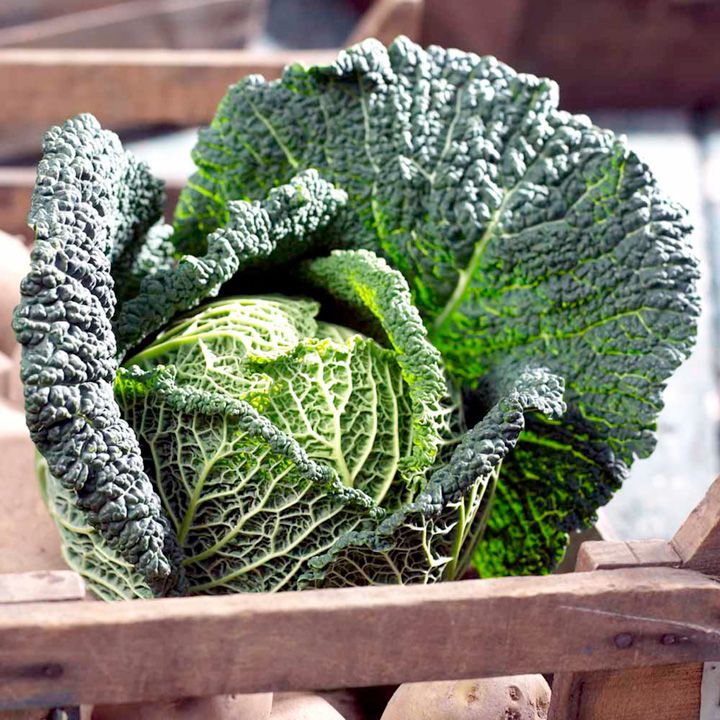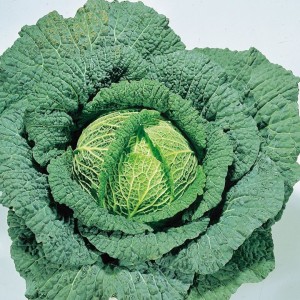I thought I’d share with you an interesting email recently received from a customer giving feedback on her experience of growing Savoy F1 Rigoleto cabbage at their home in the Austrian Alps. What a view there must be from the cabbage patch!
The crinkled curly leaves of the savoy make it an attractive vegetable to grow with the tough outer leaves protecting an inner that is both tender and sweet. Some white and red cabbages can be tough and bitter (the stuff of school dinner jokes) but the savoy is completely different, making it the preferred cabbage of many chefs and cooks.
Cabbages can be traced back to 1000BC and were used as both a food and as herbal medicine. The Ancient Greeks used cabbage as a laxative whereas the Ancient Egyptians ate it at the start of a meal to combat the effects of the wine they were about to consume!
Savoy cabbage didn’t put in an appearance until the 16th century and was named after the Savoy region of the Alps, bordering Northern Italy and France. Winter hardy, the Savoy is happy in the frost and snow of the region, which brings me back to email received from Barbara, living and growing Savoy cabbage in the Austrian Alps. Barbara has been growing the Dobies variety, Rigoleto and reports back as follows:
“Hello Dobies, I thought you might like to know how I got on with the savoy cabbage Rigoleto.
I live in the Austrian Alps not far from the coldest part of Austria. I decided to try Rigoleto to see if I could extend the garden cropping time, as virtually no vegetables survive outside in the cold and snow here.
Well, the claim in your catalogue is true – we had temperatures down to -17C overnight and a good 2ft of snow. And I am just cropping the last two cabbages now. I had to remove the outer leaves and cover the cabbages with nets because our garden is visited regularly by roe deer from the nearby hills and they love British vegetables and flowers (Austrian ones too but I grow mostly from UK seeds).
The cabbage heads held well and even though our last summer was relatively wet and some of the looser-leaved products rotted by the end of the autumn these cabbages have come through with little or no damage. And they still have a very good flavour. Any chance you could breed “Bambi resistance” into them?”
Sadly we can’t meet Barbara’s request for Bambi resistance. The fact that Savoy cabbages have less sulphur in their leaves than other varieties probably makes them more attractive as it also gives them their sweetness.
Of course the majority of our customers live in the UK rather than the Alps but many of us still experience very cold spells in winter. Living here on Dartmoor I see my fair share of the white stuff even though most people associate Devon with sea and sand.
If you fancy trying Savoy F1 Rigoleto this year then now is the time to sow the seeds. We suggest sowing them direct in shallow drills but they can also be started in pots which is what Barbara in the Alps does with her Dobies seed.
And when you come to harvest your Rigoleto crop you’ll find it is best friends with the following:
– Sage
– Thyme
– Caraway seeds
– Nutmeg
– Dill
– Mint
– Apples
– Onions, shallots and garlic
– Horseradish
– Walnuts
– Blue cheese
– Tomatoes
– Balsamic vinegar
https://www.dobies.co.uk/vegetable-plantsWhat+Veg+to+Plant+in/August+Veg+Planting/Cabbage+Rigoleto+F1+Seed_433385.htm#433385


